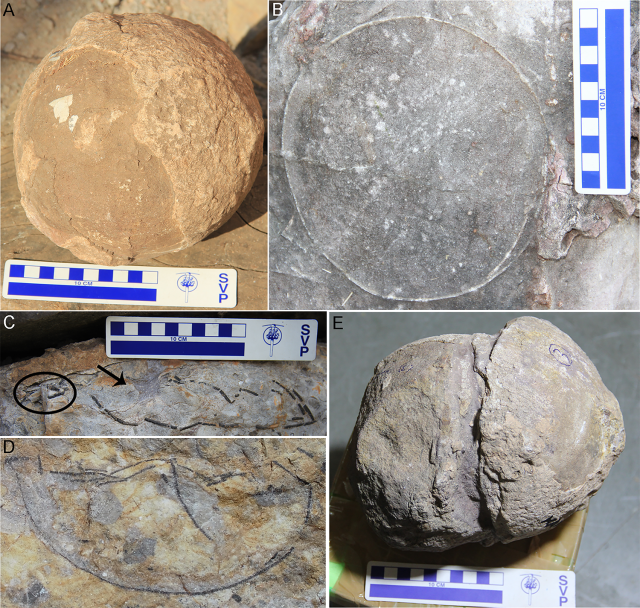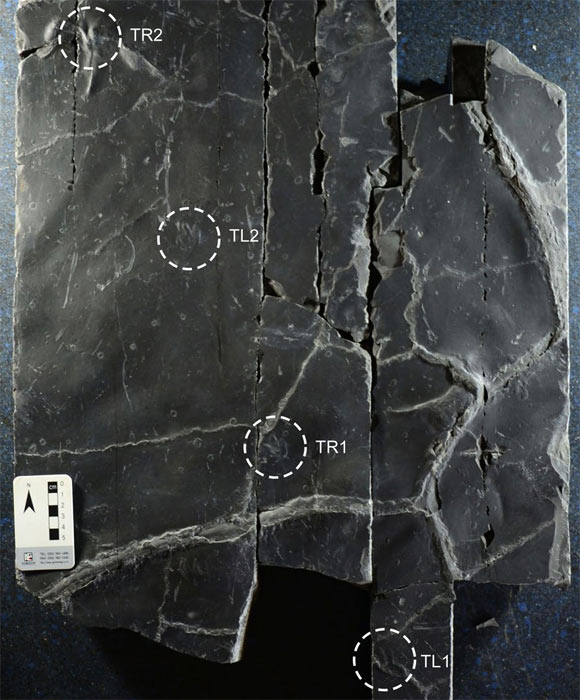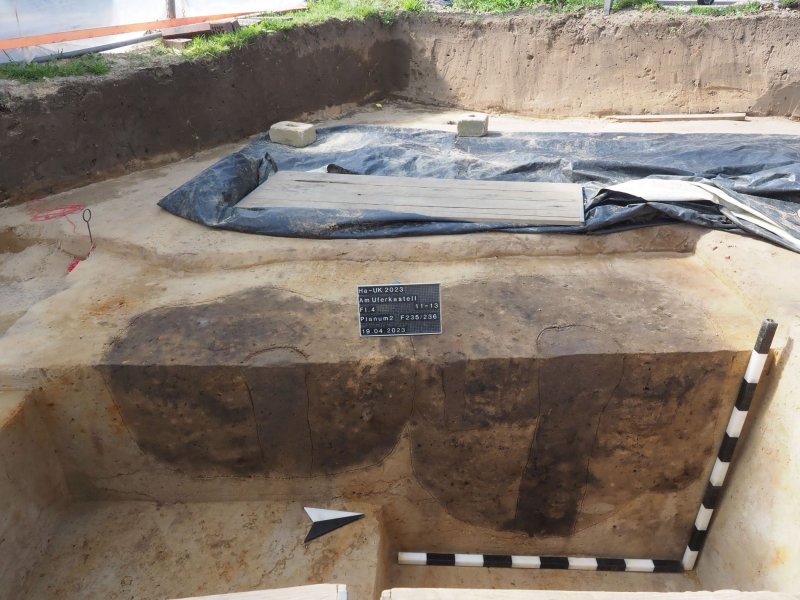Paleontologists in India have documented 92 clutches containing a total of 256 fossilized eggs of titanosaur sauropods.

Field photograph of titanosaur clutch showing tightly grouped eggs with very little to no spacing between them. Image credit: Dhiman et al., doi: 10.1371/journal.pone.0278242.
The newly-discovered dinosaur nesting sites are part of the Lameta Formation, which is located in the Narmada Valley of central India.
The dinosaur eggs found at the sites have diameters of between 15 and 17 cm (6-7 inches). They were laid by titanosaur sauropods that lived during the Cretaceous period.
The eggs belong to two egg-families (oofamilies) Megaloolithidae and Fusioolithidae and six egg-species (oospecies): Megaloolithus cylindricus, Megaloolithus jabalpurensis, Megaloolithus dhoridungriensis, Fusioolithus baghensis, Fusioolithus mohabeyi, and Fusioolithus padiyalensis.
“The high oospecies diversity points to a possible high diversity in titanosaur taxa in the Indian sub-continent though it is not reflected in titanosaurid body fossils,” said University of Delhi paleontologist Harsha Dhiman and colleagues.

Based on the layout of the nests, the paleontologists inferred that these dinosaurs buried their eggs in shallow pits like modern-day crocodiles.
Certain pathologies found in the eggs, such as a rare case of an egg-in-egg, indicate that titanosaurs had a reproductive physiology that parallels that of birds and possibly laid their eggs in a sequential manner as seen in modern birds.
The presence of many nests in the same area suggests these dinosaurs exhibited colonial nesting behavior like many modern birds.
But the close spacing of the nests left little room for adult dinosaurs, supporting the idea that adults left the hatchlings to fend for themselves.
These fossil nests provide a wealth of data about some of the largest dinosaurs in history, and they come from a time shortly before the age of dinosaurs came to an end.
“Our research has revealed the presence of an extensive hatchery of titanosaur sauropod dinosaurs in the study area and offers new insights into the conditions of nest preservation and reproductive strategies of titanosaur sauropod dinosaurs just before they went extinct,” Dr. Dhiman said.
“Together with dinosaur nests from Jabalpur in the upper Narmada valley in the east and those from Balasinor in the west, the new nesting sites from Dhar District in Madhya Pradesh (central India), covering an east-west stretch of about 1,000 km, constitute one of the largest dinosaur hatcheries in the world,” added Dr. Guntupalli Prasad, also from the University of Delhi.
Source: sci.news










